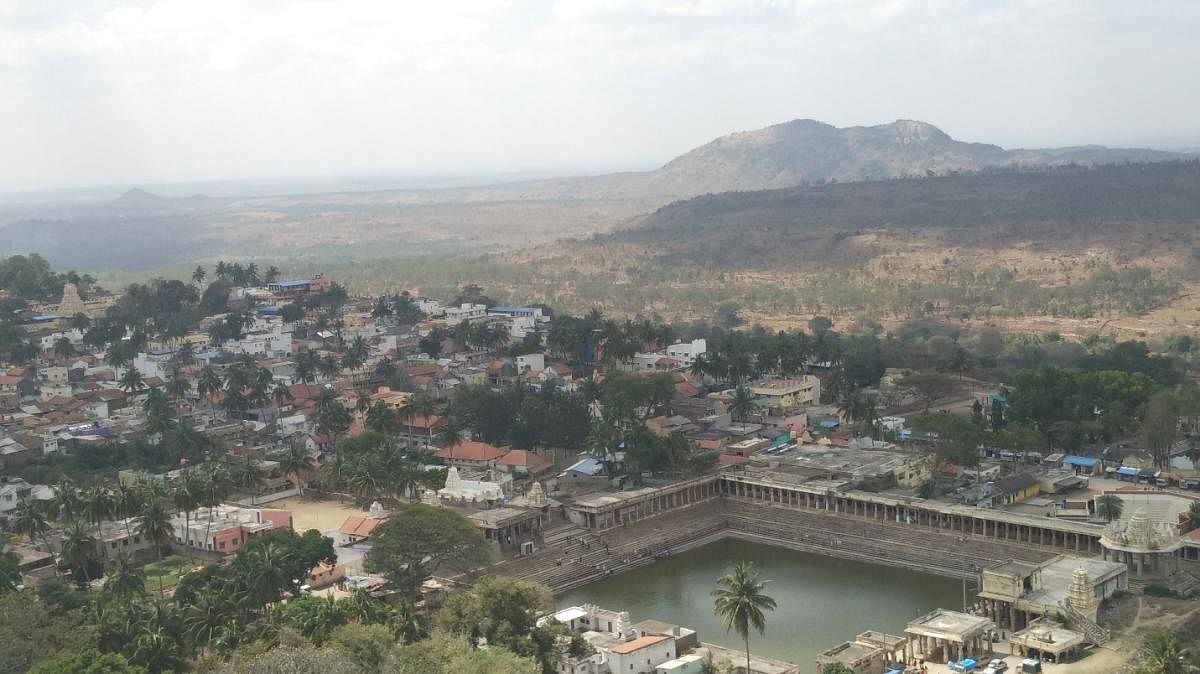
When a family friend constructed a house in Melukote and invited us to the house-warming ceremony, we jumped at the opportunity to visit this charming little temple town that is both a pilgrimage centre and a tourist attraction.
Melukote is a small, modest town and is known by several names, the most prominent being Thirunarayanapuram. It’s situated close to Mysuru — about 39 km from Mandya, and around 135 km from Bengaluru. It is one of the seats of Sri Vaishnavism, a religion propagated and made famous by the saint-poet Sri Ramanujacharya. This sleepy town, nestled in the hills, comes alive during the months of March-April when the famous Vairamudi festival is celebrated.
Temple tales
Melukote also offers spectacular views of the green, verdant valley enriched by River Cauvery. As we entered the town, we passed through the main road which houses several small shops. We parked our car and walked towards the famous Cheluvanarayana Swamy Temple. This temple is several centuries old — it enjoyed the patronage of all the kings who ruled over the Mysore region — the Hoysalas, the Vijayanagara kings, and the Wodeyars of Mysore.
The presiding deity of this temple is Lord Vishnu in the form of Cheluvanarayana, cheluva meaning beautiful in Kannada, and his consort, Sri Yadugiri Nachiyar. The Sri Vaishnavite saint, poet-cum-philosopher, Sri Ramanujacharya, fearing a threat to his life, escaped from Srirangam in Tamil Nadu and made his way to Melukote in the 12th century. He lived here for about 14 years and spread the message of Sri Vaishnavism. When we enquired about the temple’s history, the temple priest told us about the story of the lord’s missing statue and how Sri Ramanujacharya recovered it and had it reinstalled in the temple.
The story goes that the statue was taken away by a Muslim ruler in Delhi. Ramanujacharya went to Delhi, convinced the ruler to give up the statue and brought it back to Melukote. Meanwhile, the princess of Delhi who used to play with the statue was inconsolable and followed Ramanujacharya to Melukote. She fell at the feet of the Lord’s statue and breathed her last. Her passion and ‘bhakti’ have been immortalised — a statue of the princess has been engraved and she is worshipped as Bibi Nachiyar.
The temple priest also informed us that the Vairamudi festival of Cheluvanarayana is celebrated every year with much aplomb and fanfare, where the utsava murthy of the lord is beautifully decked with flowers, jewels and the acclaimed diamond crown, and taken around in a procession through the streets of Melukote.
We then proceeded to the side roads that would take us to the steps leading to Melukote’s other famous temple dedicated to Lord Yoga Narasimha. While one can motor up to the temple, we decided to climb the small hillock. Enroute, we walked past typical village houses and got our first glimpse of the beautiful temple pond or kalyani.
By the holy pond
This amazing man-made pond is an architectural marvel. It is a sight to behold and one can spend any amount of time sitting on the steps — watching the water below and the open skies above. It was constructed as a bathing area for pilgrims visiting the temple town of Melukote. We sat on the steps for a while and immersed ourselves in the tranquility of the place. We remembered scenes from Rajinikanth’s super-hit movie Padaiyappa where the scenic beauty of the kalyani with the mantapas, pillars and steps leading to the pond has been beautifully captured.
After the short but fulfilling stop at the pond, we then proceeded towards the steps from whence we would start our climb. It was not a very hard climb — we were able to accomplish it in about 20 minutes. Trees on either side of the rocky hillock provided shade and the steps, not being steep, did not pose a problem. A lovely cool breeze welcomed us at the summit, instantaneously rejuvenating the body and mind. The view from the top is breathtaking — one can immediately see and identify the kalyani, the village houses, the off-white gopuram of Cheluvanarayana Swamy Temple. In the distance, the green landscape with coconut trees, little hillocks and rocky terrain, and the surrounding valley formed a lovely panorama.
Inside the temple, the image of the lord was captivating as he sat in a yogic posture, with the head of a lion and the body of a man — Nara + Simha. It was built several centuries ago, during the Hoysala reign. Legend has it that Prahlad, son of Hiranyakashupu, installed the deity of Narasimha here.
We also climbed the narrow stairs to the terrace of the temple and had a glimpse of the huge bell that is installed at the top. After enjoying the breeze and the breathtaking view, we started back on our climb down. We thoroughly enjoyed the 2½ hours that we spent on seeing the sights of Melukote.